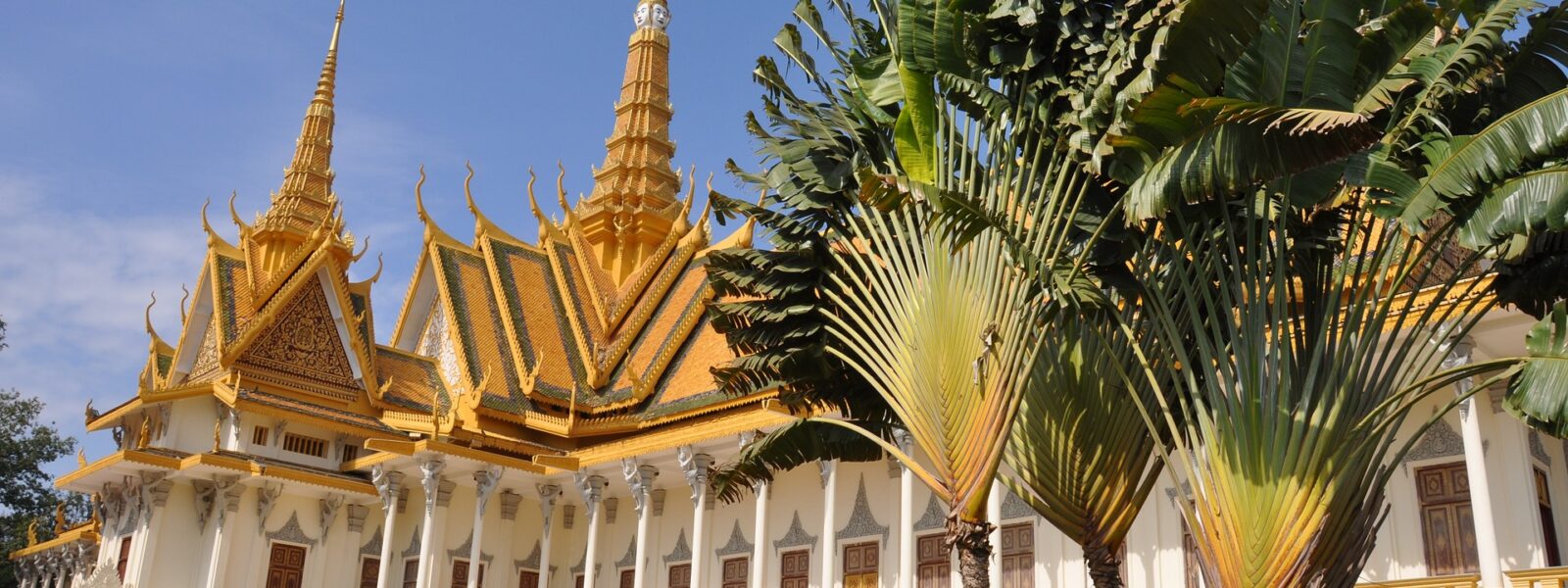Nestled in the heart of Phnom Penh, Cambodia’s vibrant capital, lies a remarkable testament to the nation’s rich history and regal heritage: The Royal Palace. A blend of traditional Khmer architecture and ornate design, this historical gem stands as an iconic symbol of Cambodia’s cultural significance. In this exploration, we’ll take you on a journey through the grandeur and historical significance of The Royal Palace of Phnom Penh.
1. A Glimpse into Cambodia’s Royalty
As you step onto the grounds of The Royal Palace, you are instantly transported to a world where past and present converge. The palace complex, built in 1866, showcases exquisite craftsmanship and intricate detailing. The various structures within the complex, each serving a distinct purpose, offer a glimpse into Cambodia’s royal history and traditions.
2. The Majestic Throne Hall
At the heart of The Royal Palace stands the Throne Hall, a masterpiece of architecture adorned with gilded ornamentation and precious gems. This grand hall has witnessed numerous historic ceremonies and royal events, including coronations and official receptions. The opulent interiors, featuring golden thrones and elaborate murals, reflect the grandeur of Cambodia’s monarchy.
3. Emerald Buddha and Silver Pagoda
Within The Royal Palace complex lies the Silver Pagoda, also known as Wat Preah Keo Morakot. This sacred sanctuary houses the famed Emerald Buddha, a mesmerizing statue made of green Baccarat crystal. The floor of the Silver Pagoda is equally captivating, adorned with over 5,000 silver tiles, reflecting the namesake of this splendid structure.
4. The Outer Court and Inner Court
The Royal Palace is divided into the Outer Court and the Inner Court. While the Outer Court welcomes visitors with meticulously maintained gardens and open spaces, the Inner Court remains a private area for the royal family. This distinction provides insight into the daily lives of Cambodia’s monarchy while preserving their privacy.
5. Legacy and Cultural Significance
Beyond its architectural marvels, The Royal Palace serves as a living museum of Cambodia’s cultural heritage. It symbolizes the enduring connection between the Cambodian people and their royalty. The palace’s role in hosting state functions and welcoming dignitaries showcases its ongoing relevance in modern times.
Conclusion
The Royal Palace of Phnom Penh stands not only as a historical treasure trove but also as a testament to Cambodia’s resilience and cultural pride. Its intricate architecture, breathtaking interiors, and storied past make it a must-visit destination for travelers seeking to immerse themselves in Cambodia’s regal heritage. As you explore the palace’s hallowed grounds, you can’t help but feel the weight of history and the enduring legacy of Cambodia’s royal lineage.


You must be logged in to post a comment.